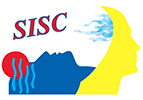In a clinic or headache center, over 90% of patients are diagnosed with migraine, in its various subtypes, or with tension-type headache. In the remaining cases, secondary headaches, painful cranial neuropathies, cluster headache and rare primary headaches, in a percentage not yet well defined, can be found. The latter include the remaining TACs and other primary headaches, well defined and described in the ICHD-3 Classification published in January 2018. Data on the prevalence of rare primary headaches in the general population or in headache centers are not available. It would be interesting and a source of valuable information to conduct a SISC independent research study dedicated to this specific topic to fill this epidemiological gap. The collection and processing of data would be useful not only from an epidemiological point of view, but also for clinical practice. In the presence of a rare headache, in fact, the diagnostic path can also vary considerably among the different specialists. If, in the vast majority of rare primary headaches it is reasonable to undergo a MR scan, in other cases, such as in primary stabbing headache, a neuroradiological examination may seem superfluous. In my personal database, with over 5,000 cases of primary headaches evaluated in the last 10 years, rare primary headaches are distributed as follows: 3.2 Paroxysmal hemicrania - 4 cases (in 2 cases uncertain diagnosis was due to poor indomethacin response), 3.3 Short-lasting unilateral neuralgiform headache attacks - 1 case (SUNA), 3.4 Hemicrania continua - 1 case (uncertain diagnosis, because of limited indomethacin response), 4.1 Primary cough headache - 3 cases, 4.2 Primary exertional headache - 2 cases, 4.3 Primary headache associated with sexual activity - 9 cases, 4.4 Primary thunderclap headache - 2 cases, 4.8 Nummular headache - no case, 4.9 Hypnic headache - 21 cases and 4.10 New Daily Persistent Headache - 11 cases. Accurate data are missing regarding 4.5 Cold stimulus headache, 4.6 External pressure headache and 4.7 Primary stabbing headache due to their low clinical relevance. Sometimes such headaches, often anecdotal, are reported by patients, only if asked explicit clinical questions. Furthermore, Primary thunderclap headache is frequently associated with migraine and therefore plays a marginal clinical role due to its very low impact on the quality of life. In short, the results relating to my personal case studies highlight two points in particular: the surprisingly low prevalence of Hemicrania continua (HC) and the more relevant prevalence of Hypnic headache (HH).
HC represents a rather controversial headache, whose pathophysiology and diagnostic criteria have for some time constituted grounds for debate and discussion. This headache was not present in the ICHD-I Classification, whereas in the ICHD-II it was a new entry in Chapter 4. In the ICHD-3, however, HC has been included in Chapter 3, on the basis of the typical one-sidedness of the pain, as well as autonomic symptoms when present. Two subtypes have been described: 3.4.1 HC, remitting subtype and 3.4.2 HC, unremitting subtype. According to sporadic reports based on a few cases, the prevalence of this headache seems to differ significantly between the various headache centers, possible evidence of how the current diagnostic criteria can leave doubts and uncertainties open. Criteria A (one-sidedness) and D (absolute response to indomethacin) are well-established and indispensable clinical elements for diagnosis. The clinical characteristic of "one-sidedness" is, however, not completely devoid of a certain indeterminateness, since the topographic seat of the pain in other TACs, rigorously and strictly one-sided, is clearly delineated and defined. However, it is for criteria B and C that the interpretation is not so immediate and univocal. Criteria B requires that exacerbations occur of "moderate or greater intensity" (in the ICHD-II the intensity was considered necessarily severe). However, neither the duration (minutes, hours or days) nor the frequency (in a day, month or year), of these exacerbations are specified. Also point C is not well defined: the autonomic signs or symptoms (identical to those of the cluster headache) ipsilateral to the pain site are not strictly necessary for the diagnosis, as a sense of restlessness or agitation, or aggravation of the pain by movement may be sufficient to meet this criterion.
Due to these possible diagnostic uncertainties, it is not infrequent to suspect a form of HC in clinical practice that subsequently is not confirmed, mainly due to the possible non response to adequate doses of indomethacin. In such cases the diagnosis of "Probable HC" should be made. These are my personal considerations, that can stimulate debate and that are waiting to be discussed or contradicted by the different opinions of SISC Members experts in the field. The fact remains that HH is, among the rare primary headaches, the most frequent and probably the most easily diagnosed form, due to its peculiar and distinctive clinical characteristics. This is one of the reasons that led SISC to promote a new independent research study with a specific questionnaire on the clinical and therapeutic aspects of HH. The questionnaire is accessible via the the restricted area in the Independent Research Section of the SISC website, using the credentials provided to each single Clinic or Center included in the "Headache Centres" section.
Subscribe our newsletter to receive our news and updates
This site uses cookies to improve navigation: if you continue without changing your browser settings, you will accept to receive cookies from the site and from third parties. Cookie policy
I understand and accept